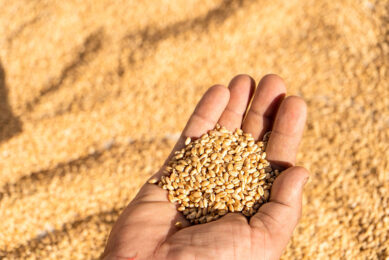Fighting head blight requires multi-pronged approach
A wheat breeder with the University of Manitoba recommends a multi-pronged approach for reducing the potential for yield and quality loses in cereal crops resulting from fusarium head blight.
Fusarium graminearium attacks cereal grains, particularly wheat and barley as well as oats and corn, reducing yields and producing deoxynivalenol, or DON, a mycotoxin that reduces the end use quality of the grains.
"Fusarium head blight-management through breeding for disease resistance" was discussed last month as part of a Mycotoxin in Grain seminar in Winnipeg.
Genetic resistance
Dr. Anita Brûlé-Babel, a wheat breeder with the University of Manitoba, reports there is a potential for developing genetic resistance to fusarium but genetic resistance is not complete in either wheat or barley so, when you have good conditions for the disease, even the most resistant varieties are not always capable of withstanding the pathogen.
“Some newer varieties have been registered that are labelled as moderately resistant at least within the wheats, both in the spring wheats and also in the winter wheats as well,” she said.
“These as moderately resistant will still have disease under high disease epidemic conditions but are better than what the susceptible and moderately susceptible materials of the past have been.”
Not fully effective
At UoM they made some improvements genetically but unfortunately the resistant sources that they have are not 100% effective. They need to be combined with management practices, such as residue management, crop rotation and use of fungicides when conditions are conducive to disease development.
“Unfortunately individually none of these are 100 percent effective so we really do need a multi-pronged approach to managing this particular disease,” said Dr Brûlé-Babel.
More virulent chemotype
Dr. Dilantha Fernando, cereal and canola pathologist with the University of Manitoba, says 3 Acetyl or 3-A DON, a more virulent chemotype which produces more of the mycotoxin, has displaced 15-A DON as the most predominant chemotype in Manitoba.
Dr. Dilantha Fernando, cereal and canola pathologist with the University of Manitoba, says 3 Acetyl or 3-A DON, a more virulent chemotype which produces more of the mycotoxin, has displaced 15-A DON as the most predominant chemotype in Manitoba.
“Some of the data that we have from 2010 clearly shows that the 3-A DON isolates or strains are at about 88% in prevalence compared to 13% of the 15 Acetyl DON which is alarming because earlier it was about 30% of the 3 Acetyl DON producers,” she said.
Source: Farmscape.Ca
Join 26,000+ subscribers
Subscribe to our newsletter to stay updated about all the need-to-know content in the feed sector, three times a week. Beheer
Beheer









 WP Admin
WP Admin  Bewerk bericht
Bewerk bericht